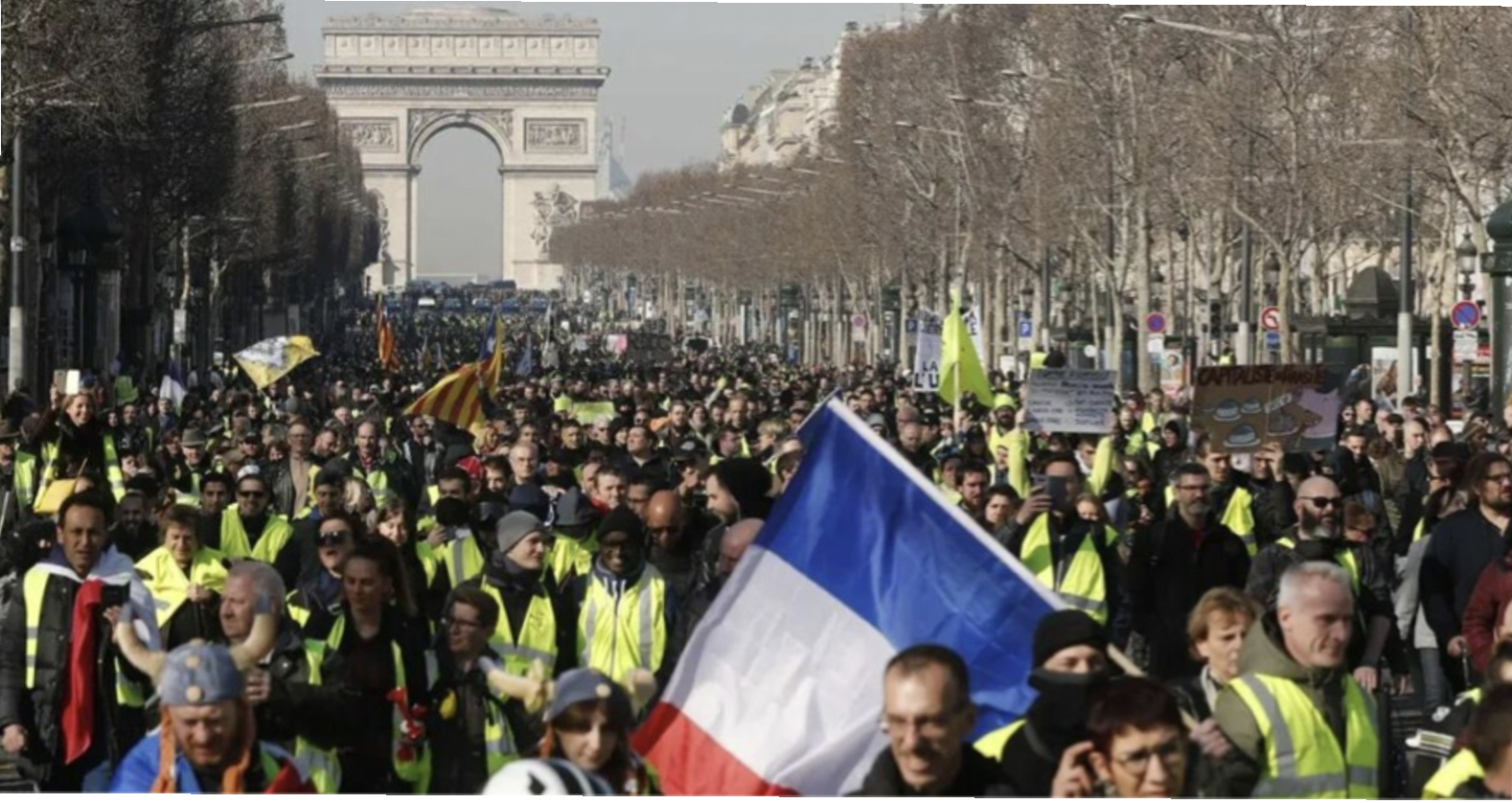As living conditions steadily worsen – fueled in part by an escalating global struggle over scarcening resources – popular uprisings are becoming inevitable. The Yellow Vests made history through their spontaneous, unpredictable nature and wide-ranging support that cut across traditional political divides. In 2018, their raw refusal of the status quo struck a nerve across France and beyond. In stark contrast, subsequent movements such as the pension protests became bogged down in bureaucratic union marches, losing its momentum. The recent call to action on September 10th 2025, sparked by new austerity measures from the French government, reignites a simmering anger - a clear signal that many are still prepared to challenge the system embodied by Macron’s administration. Yet, the trajectory of these movements also reveals deeper tensions. While Bloquons Tout sought to channel popular frustration into organized resistance through blockading logistics flows, it struggled with internal divisions and was hindered by ideological gatekeeping from the left, alienating many of the very people it aimed to mobilize. Meanwhile, the Yellow Vests’ collective strength also proved to be their vulnerability, as they lacked clear leadership and coherent demands.
This article offers a critical analysis of both movements, exploring how their hopes, contradictions, and failures reflect the complex realities of social resistance in contemporary France.
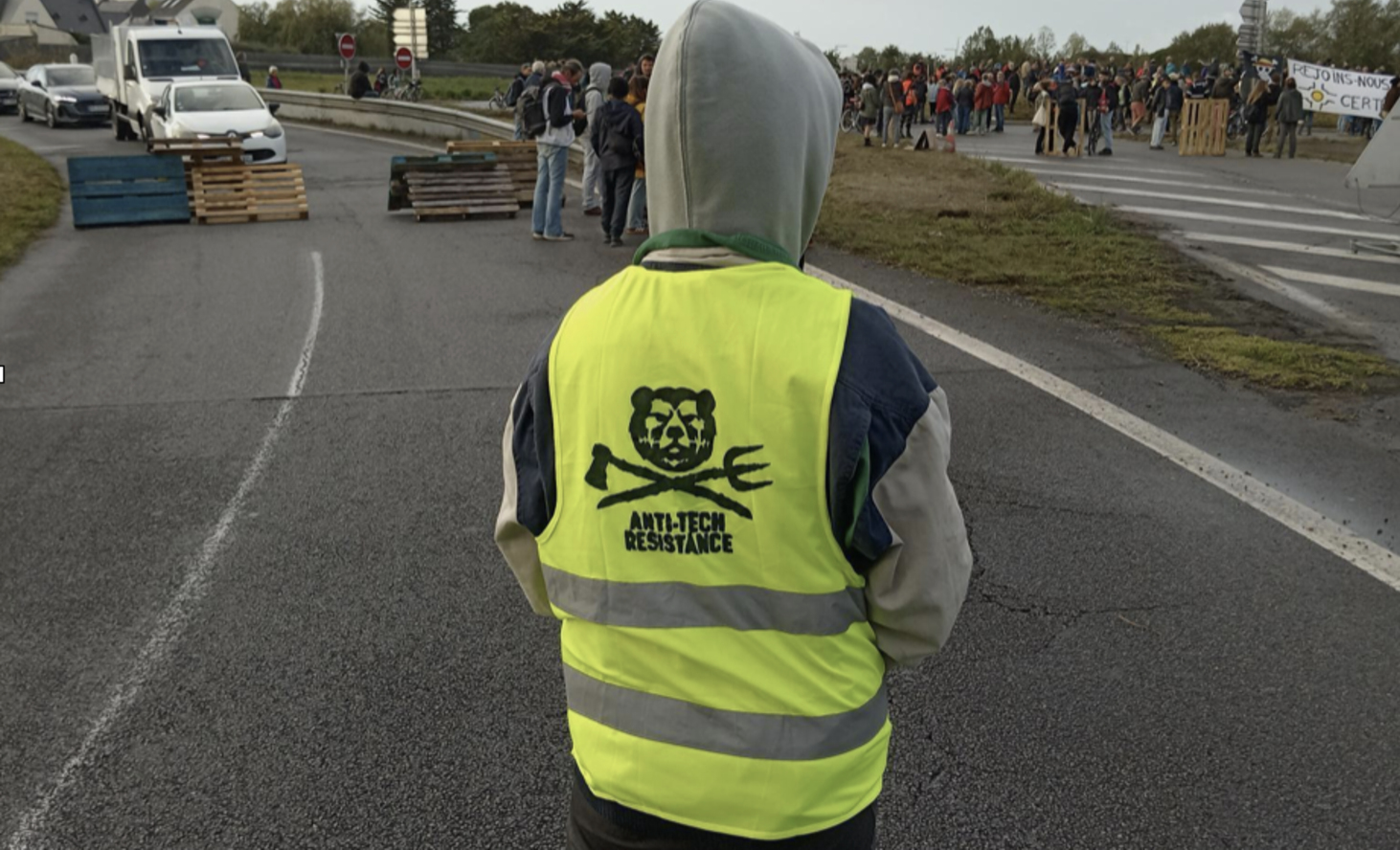
STRATEGIC ANALYSIS - FAILURE AND SUCCESS OF THE BLOCK EVERYTHING MOVEMENT
From Popular Revolt to Leftist Rebranding: How Bloquons Tout (Block everything) Lost Its Fire
At first glance, the Bloquons Tout movement bore a striking resemblance to the early days of the Yellow Vests, the grassroots uprising that shook France to its core in 2018. It was spontaneous, grassroots, and unaffiliated with any traditional political structure. The central demand was simple: the resignation of President Macron. But more fundamentally, behind reformists demands, the movement expressed a deep, collective frustration – a rejection of deteriorating living conditions and a system perceived as profoundly unjust and openly contemptuous of ordinary people. This movement has notably captured our attention as anti-technology revolutionaries, for whom it is crucial to remain vigilant toward any uprising that both reflects and galvanizes popular anger. What also distinguishes this movement – and makes it particularly significant—is its strategic emphasis on the large-scale disruption of logistical networks, directly confronting technological infrastructures. Although we do not endorse the reformist demands, the tactic they have adopted creates opportunities to advance a materialist strategy towards a revolutionary goal.
However, what followed represented a decisive break from the Yellow Vests’ path and marked the decline of what might have become a powerful popular movement. Very quickly, Bloquons Tout was co-opted by segments of the institutional left and broader activist networks. A left-wing party stepped in, redirecting the movement’s energy toward electoral goals and moderate reforms, a shift that diluted its more radical and chaotic edge. Activist collectives quickly joined in, reshaping the original platform into something more ideologically "correct": a front defined strictly by anti-fascist, feminist, and anti-racist principles. This rebranding came with an implicit message: "Better not to fight at all than to fight alongside anyone with unclear or divergent views. "
Of course, this allowed the movement to purge right-wing sympathizers, but it went much further than that: it also pushed out politically ordinary people who didn’t define themselves by activist labels or rigid ideological frameworks - those whose motivation was rooted primarily in material hardship rather than political identity.
For many, this was a turning point. Former Yellow Vests either stopped showing up entirely or attended assemblies in a state of growing disillusionment. What had started as a broad, bottom-up revolt began to fracture under the weight of political gatekeeping. This is where Bloquons Tout truly began to diverge from the Yellow Vests model (which had its own flaws, detailed below) — and where its strength started to unravel.
Unlike Bloquons Tout, the Yellow Vests were never built around ideological purity. That was, paradoxically, their greatest strength. They created a space where people from across the political spectrum — many of whom had never joined a protest in their lives — could come together. What united them wasn’t a shared identity or checklist of beliefs, but a raw, lived rejection of a system that had failed them. The Yellow Vests movement was messy, but it was real. It was held together not by a moral line in the sand, but by material solidarity and an unfiltered sense of urgency and discontent. And that’s exactly what made it at first both powerful and ungovernable.
From Concrete Blockades to Routinized Symbolic Protests: The Tactical Decline of Bloquons Tout
This first wave of action on September 10th was a notable success, sometimes managing to avoid the trap of large centralized blockades by favoring coordinated actions among small, mobile groups that created simple slowdowns at critical points - quickly bringing traffic to a halt. All the while, most of the participants tried to carefully avoid direct confrontations with law enforcement, choosing to disperse and regroup elsewhere when necessary. Yes, the movement was combative, but struggled to move beyond the entrenched left-right political divides. As a result, it alienated a large part of the population who were dismissed by the leading activists. This divide was often reinforced by the media, further isolating many potential supporters. This had the effect of producing, in the streets, a majority of people who shared the same codes, the same activist habits, and the same cultural references. It’s no surprise, then, that the old, ineffective forms of protest made a comeback — much to our dismay. Not only because the police were quick to dismantle the blockades, but also because many activists fell back on familiar, habitual forms of mobilization.
September 10th was, in many ways, a contradictory moment. On the one hand, it served as a valuable learning experience - a space to connect with those disillusioned by the stranglehold of the left, who reject the traditional left-right divide altogether, but are simply exhausted by a system that strips them of their dignity.
On the other hand, it reflected the all-too-familiar defeat of social movements no longer driven by the anger of the people, but by a majority of activists stuck in routine — repeating the same slogans, the same tactics, the same rituals, and the same reformist or idealistic demands, regardless of their actual impact. A struggle trapped in a cycle of repeated failure, bound to burn out as the system continues to fuel growing frustration and widespread anger.
History will prove the revolutionaries right. Sooner or later, the balance of power will tip.
STRATEGIC REVIEW - FAILURE AND SUCCESS OF THE FRENCH YELLOW VESTS MOVEMENT
We were glad to finally witness a grassroot uprising like the French Yellow Vests movement. To some of us, as activists, these protests were a decisive turning point. Knowing that some people still are politically involved and willing to fight for freedom and social justice makes us feel strong and determined.
SUCCESS OF THE YELLOW VESTS
Before talking about what the French Yellow Vests did wrong, we would like to stress what they clearly did well from a tactical perspective :
• They were very effective in gathering people from various backgrounds and channelling their anger into a powerful force that coud have brought major social change in the country[1] ;
• They chose an emblem - a safety vest - and a color - yellow - that created a sense of belonging and increased their impact in the media ;
• They opposed the long term social impacts of our globalized techno-industrial system - insecurity, dependancy, competition, terrorism, etc.[2] ;
• They gathered locally, occupying crossroads and blocking traffic in towns and villages throughtout the country ;
• They revealed a imperious need for social interaction, bonding and connection[3] ;
• Protesters maintained their autonomy within the movement, allowing maximum creativity ;
• They used storytelling techniques, calling each day of protest an Act, as in a theatre piece[4] ;
• The Yellow Vests were also effective in using social media and instant messaging to gather more protesters[5] ;
• They were skilled at using Facebook and managed to trick journalists, experts and politicians, who favoured Twitter, and get the attention of the masses[6] ;
• They exaggerated the numbers of participants to national demonstrations in order to encourage more people to join the movement.
MISTAKES OF THE YELLOW VESTS
No specific nor clear objective
The Yellow Vests protesters initially gathered in reaction to a carbon tax. Although they initially claimed for direct democracy, some reformist aspirations quickly emerged, like the Citizen-initiated referendum (abbreviated RIC), a tax reform or a proportional voting system for Parliament.
Mao Zedong said that, in order to build an effective movement in a given society, one needs to find its main paradox. In an asymmetrical conflict, an organisation who doesn’t have a clearly defined objective or who seeks to reach several ones will have a tendency to collapse more quickly or to slowly deteriorate. Indeed, the lack of clarity will bring confusion around the path leading to success and provide a breeding ground for internal conflict. That is why businesses - that is the most common type of social organisation today, usually define SMART strategic objectives (SMART standing for Specific, Measurable, Agreed, Realistic and Time bound).
Choosing a single objective will also allow for better resources management. In an asymetrical conflict, the weaker side often relies on very little resources in terms of equipment, people or money. Setting a single goal will then clearly be an advantage, since most of these resources will be allocated to its achievement.
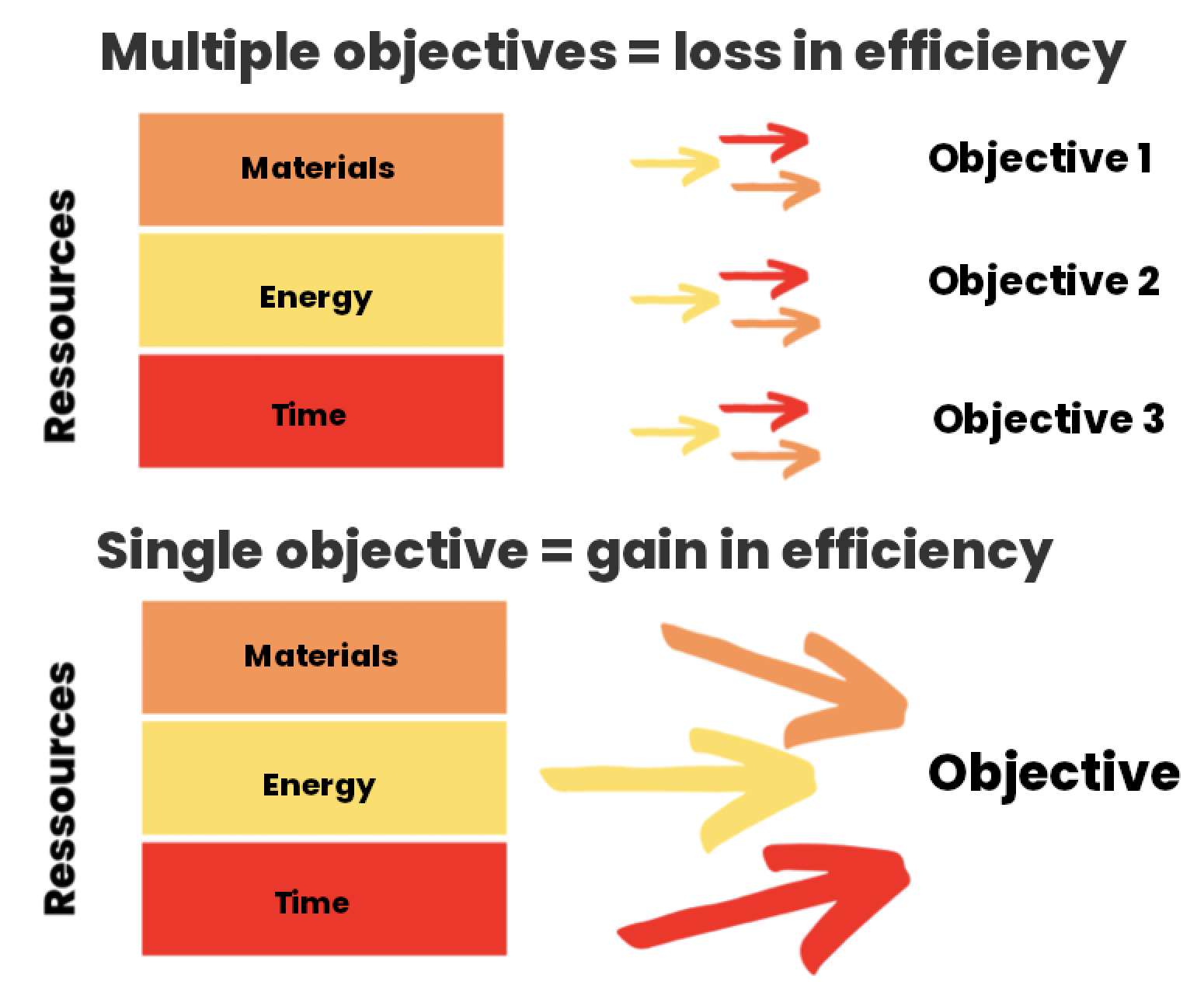
Prefering a single objective systematically leads to a more efficient social movement. “It’s just math”, one would say.
Lack of knowledge and lack of strategy
To reach greatest effectiveness in a planned non-violent action, one should develop the most solid and suitable strategy for the given context[7].
– Gene Sharp
The reactive nature of the Yellow Vests uprising against the government tax policy and their rapid development as a social movement deprived them of a strong doctrine and a solid strategy. Some strategic planning would have been useful before taking action, although this was of course difficult and maybe impossible in such a sudden event.
With no prior preparation nor ideological framework to ensure proper coordination of activists and use of resources, the movement ran out of steam as fast as it initially emerged. According to political scientist Gene Sharp, strategy is the idea of the best way to act to achieve one’s goals in a conflict.
There are four levels of strategy :
• General strategy - it is the broad plan guiding a political movement ;
• Campaign strategies - they define how to deal with specific conflicts for the general cause and strategy. For example, the ecologist organization Sea Shepherd is fighting several campaigns as part its general fight against the extinction of oceans wildlife ;
• Tactics - they determine how activists will act and the methods they’ll use in a given situation ;
• Specific methods - they are actions taken within the course of operations.
To remain brief, we will come back to these concepts more thoroughly in further articles.
No chain of command nor charismatic leaders
The Yellow Vests movement had no identified leaders and no organizational structure. Nevertheless, a few charismatic personalities emerged : Éric Drouet, Maxime Nicolle, Priscilla Ludovsky, Jérôme Rodrigues, Thierry-Paul Valette or Ingrid Levavasseur. However, since the social movement had already started, they didn’t have any ideological ground nor clear objective and strategy to bring together their wide range of aspirations. And these natural leaders coudn’t do anything to prevent the collapse of the movement. Their fate was sealed from the very beginning.
Sadly, many activists seem to have an irrational aversion towards all form of organizational hierarchy, even when it allows for great individual freedom. To back their position, they put forward irrational beliefs and fallacious explanations ; “leaders and managers are meant for right wing organizations, businesses, trade unions and political parties” - they argue, “they are just wrong”. According to them, it would be too easy to take the head off such a movement, and the best achievement of the Yellow Vests was to avoid any chain of command, since it would automatically give rise to a dictatorship, etc.
Here is what we can argue back :
1) No resistance movement in history has achieved anything without a vision, a strategy and leaders. Even anarchist ones. Rojava had Abdullah Öcalan. Chiapas had Marcos. Ukraine had Makhno. Spain had Durruti. And for other resistance movements, same story. South Africa had Mandela. France had De Gaulle and Jean Moulin. Cuba had Castro and Guevarra. China had Mao. Russia had Lenine and Trotsky. The Black Panthers had Bobby Seale, Huey P. Newton and Eldridge Cleaver[8]. Ireland had Eamon de Valera and Michael Collins. Vietnam had Hồ Chí Minh and Võ Nguyên Giáp. Guinea Bissau had Amilcar Cabral. Burkina Faso had Sankara. Bougainville Island had Francis Ona. Afghanistan had Massoud. Etc.
One will notice that most of these movements are on the left side of the political spectrum. And we could go on listing effective movements for pages. We could also list all the headless, spontaneous and disorganized uprisings which have failed and continue to fail, in France and elsewhere: the demonstrations of May 68, Nuit Debout, Occupy Wall Street, Extinction Rebellion, the Climate movement, the hippie movement, the Yellow Vests, etc.
We could also cite a host of examples showing that the absence of a basic organizational structure doesn’t prevent implicit hierarchy to appear. Under the guise of equality and benevolence, the most implacable tyranny can take hold. And sadly, activist circles are plagued by these dynamics. As Theodore Kaczynski rightly wrote, “the leftist is motivated less by distress at society’s ills than by the need to satisfy his drive for power by imposing his solutions on society 9]”. Individualism harms efficiency. In a political movement, one should play collectively. Ego and secondary disagreements should give way to the priority cause.

In the book Full Spectrum Resistance, we learn that Amílcar Cabral's leadership was never authoritarian: “Probably the most impressive feature of Cabral’s leadership was his success in developing a party which could operate effectively without him[…]. Cabral’s approach consisted in relying more on the cadre [core organizers] which he trained than on the structure or ideology of the party.”
2) To fight against a group with contradictory objectives, some basic organizational structure is required. It is just more effective. Some people have special skills and excel in a specific area, others are just lazy and cowardly [10]. Older people benefit from life experience, younger ones are full of enthusiasm and can't sit still. Some people are more stable than others and manage to put aside their ego and dedicate themselves entirely to the cause. Some are good listeners and show humility, while others are incapable of it. Organizing this diversity in order to achieve a specific objective requires a minimal organizational structure and some managers. This is even more true once the movement reaches a critical size. It’s hard to imagine how to work towards a common goal without a minimal structure at 50 people, let alone 500 people or more. In addition, in case of an attack, we must react quickly and in a coordinated manner, which is impossible in a democratic framework. Never have elections taken place on a battlefield. For all these reasons (and others we probably forget) an organization which aims for final victory must be structured. Even anarchic tribal societies often temporarily formed themselves into chiefdoms and states to defend themselves against invaders [11].
That said, we are well aware that too much hierarchy leads to bureaucracy and inefficiency. Therefore, the art of strategy lies in the search for an organizational structure that leaves sufficient autonomy and initiative to individuals, while ensuring that the movement progresses towards the objective. To conclude, millennia of history show that a minimum of supervision is needed and effective in building a solid movement during a conflict. Denying it will irremediably lead to defeat.
3) A hierarchical movement is not necessarily an authoritarian one and will not necessarily give rise to a totalitarian regime. In Ukraine, at the beginning of the 20th century, the anarchist peasant Nestor Makhno led a revolution in the name of the peasantry without authoritarian drift. Unfortunately, other forces quickly neutralized the Makhnovshchina. A few years later, Makhno wrote of the Russian anarchists crushed by the Bolsheviks: “Had anarchists been closely connected in organizational terms and had they in their actions abided strictly by a well-defined discipline, they would never have suffered such a rout[12] .”
Same thing for Rojava, Chiapas, Bougainville Island, Ireland, etc. Once again, this idea is based on the following fallacy - the means of a fight would necessarilly determine its outcome. This is only true in some cases. There is confusion here between the hierarchical structure of a movement and the objective sought. If a movement's objective is to overthrow the government and seize power to impose a utopian system to all people living on its territory, it has a strong chance of evolving towards authoritarianism. It has been shown that a formal order imposed from above results in chaos rather than order[13]. On the other hand, if a movement sets itself the objective of dismantling the material conditions – means of communication, energy infrastructure and transport networks – which underlie the constitution of a centralized power, the establishment of a despotic regime becomes practically impossible[14].
4) The leaders of victorious movements are not systematically assassinated. First, examples abound of effective movements that have achieved their goals without losing their leaders. The cult dedicated to Thomas Sankara and Patrice Lumumba in Africa shows well that an assassinated leader immediately becomes a martyr[15]. The underground newspapers of the French resistance regularly published lists of fighters murdered by the enemy to build a story, arouse admiration and create vocations[16].
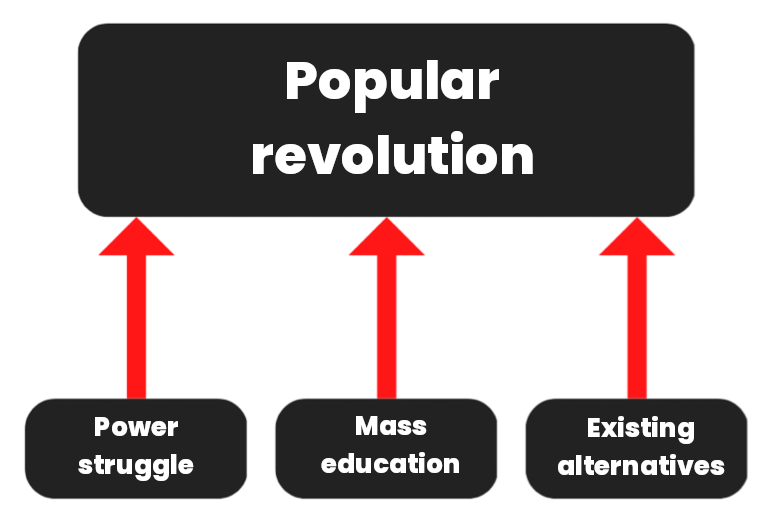
Another essential information on the strategic level is given to us by the comrades of the Atelier paysan in their manifesto Reprendre la terre aux machines (Taking the land back from the machines). According to their observations, all victorious social movements of the last two centuries had three main components: the existence of alternatives to the existing social order, popular education (bringing political consciousness) and a power struggle. In this article, we will focus on this last aspect of the struggle.
Tactical mistakes
(The following list is not exhaustive)
Demonstrating in Paris
Thinking that all political problems can be solved in Paris is an old French habit probably inherited from the 1789 Revolution. But we are not in the 18th century anymore. First, following repeated Parisian insurrections at the beginning of the 19th century, the architecture of the avenues was redesigned under Napoleon III to facilitate the marshalling of police forces[17]. This change had the effect of reducingt the effect of friction of terrain (. In asymmetrical combat, smooth, flat terrain greatly benefits the stronger army. That is why the side with fewer resources must strive to fight its opponent where the effect of friction is maximum (for example: forests, marshes, mountains). Note that building barricades serves, among other things, to increase this effect of friction, but it is much more difficult to build them on large boulevards.
On the other hand, power in today's industrialized world is concentrated in large bureaucratic and economic organizations. Their power rests entirely on material elements, primarily energy, transportation and communications infrastructure. The latter guarantee, for example, to a modern State – or to private militias – a capacity for intervention and control over the entire territory “colonized” by said infrastructures. Furthermore, by making the entire population of a given territory dependent on these infrastructures for their livelihood (food, energy), large private and state industrial firms have managed to impose overwhelming material domination. Thus, storming the capital will certainly create some disruption locally, but it is not likely to radically change the unequal distribution of power within French society. It would have been wiser to keep fighting in all parts of the country, on roundabouts and roads.
The destruction of symbols
The ransacking and destruction of property may bear some symbolic value, but have low impact in terms of effectiveness. Although it was somewhat satisfying to see the bourgeoisie of TV sets fearing the people, we must recognize that the damage to the Arc de Triomphe and on the Champs Élysées ultimately did not help much the cause of the Yellow Vests. Above all, power rests on material means – technologies, not on symbols. Moreover, these acts were a godsend for the authorities, who were only waiting for this to intensify the repression of the movement. It is important to understand that we are not making a moral judgment here. The question is not to know whether it is a good or bad thing to ransack a monument, but to determine, in view of the consequences, whether this action allowed to increase or not the material power of the Yellow Vests movement.
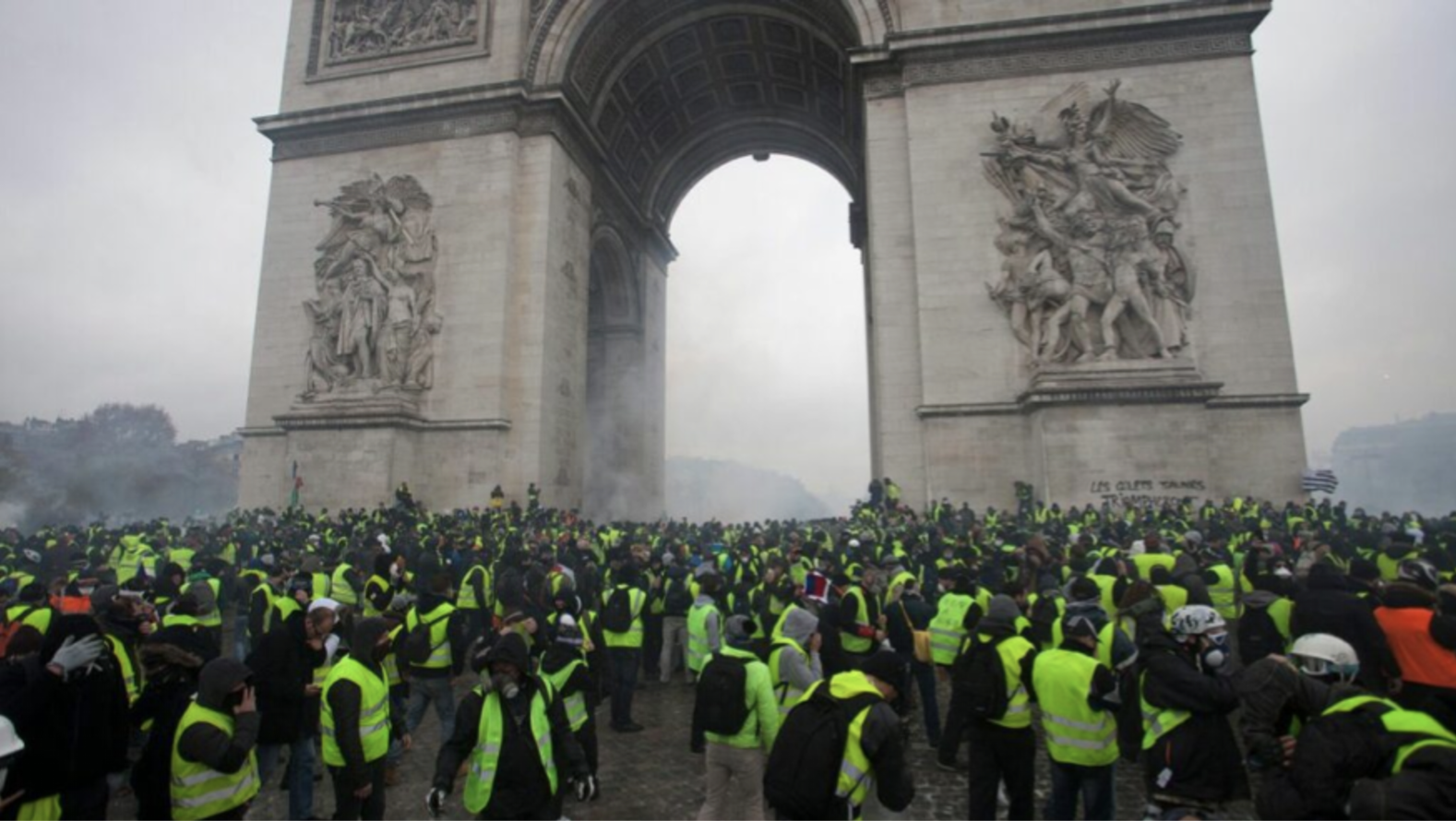
Victimization
The last tactical error that comes to our mind is the way the Yellow Vests communicated about the injured during the clashes with the police. According to Wikipedia, there were nearly 25,800 injured, including 2,500 that were serious enough to need the French firefighters’ intervention (translator’s note : required for medical emergencies). The injured were often presented as victims, to highlight the brutality of the police. But such a communication choice tends to induce fear and to discourage people in a movement. We believe that a movement seeking to gain psychological advantage over its enemy should on the contrary present its wounded as heroes and martyrs. We must tell their stories and glorify their risk-taking and sacrifice. Here again, everything must be thought out in advance, hence the need for preparation and a strategy.
The Yellow Vests movement was very beneficial. It reminded us that the revolution is still fully relevant. As long as there is injustice, as long as there is an elite of parasites who concentrate power in their hands, there will be revolutionaries. This is a law of history. We hope that this article will act as a humble contribution to improve the effectiveness of future fights.



